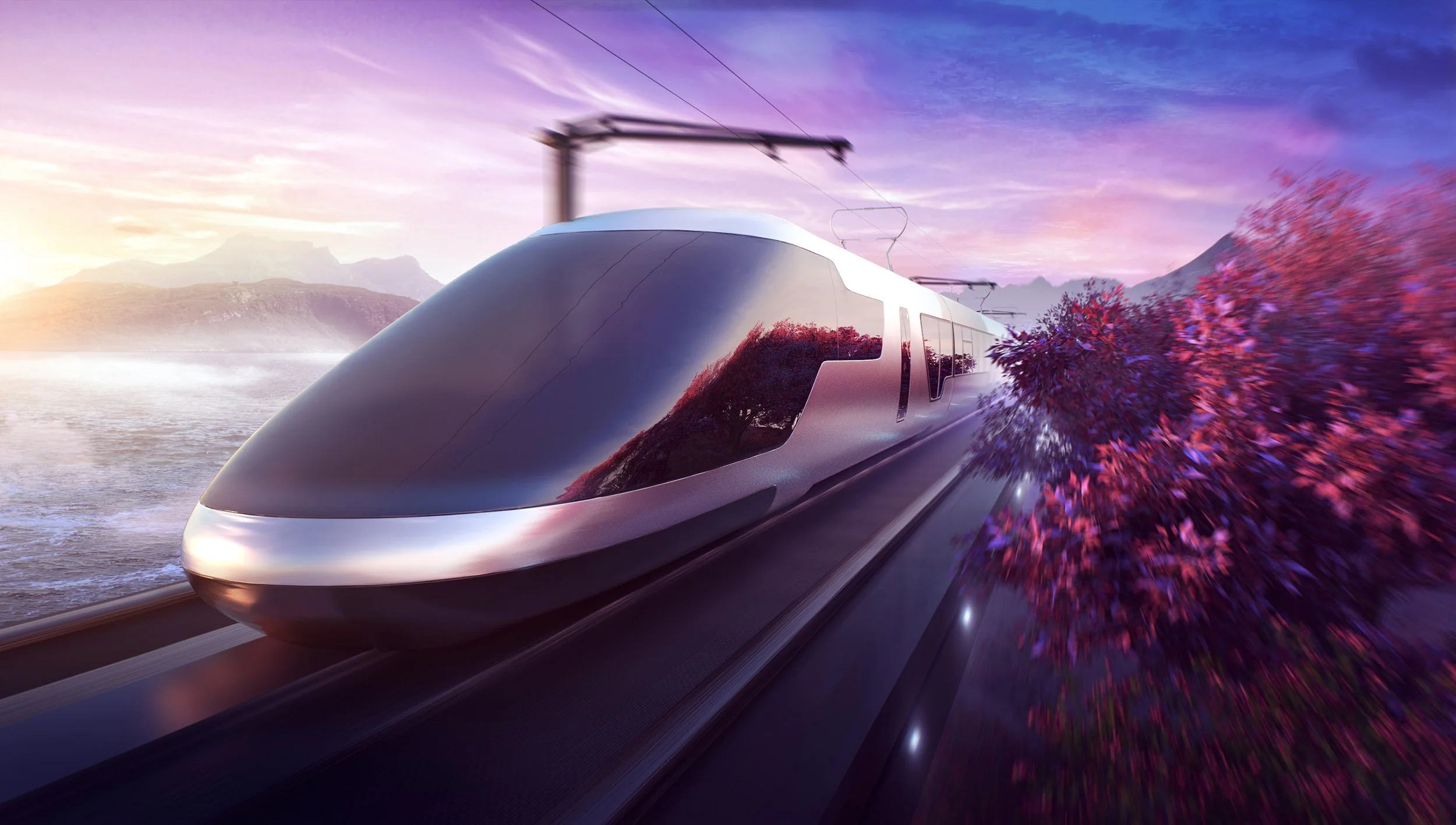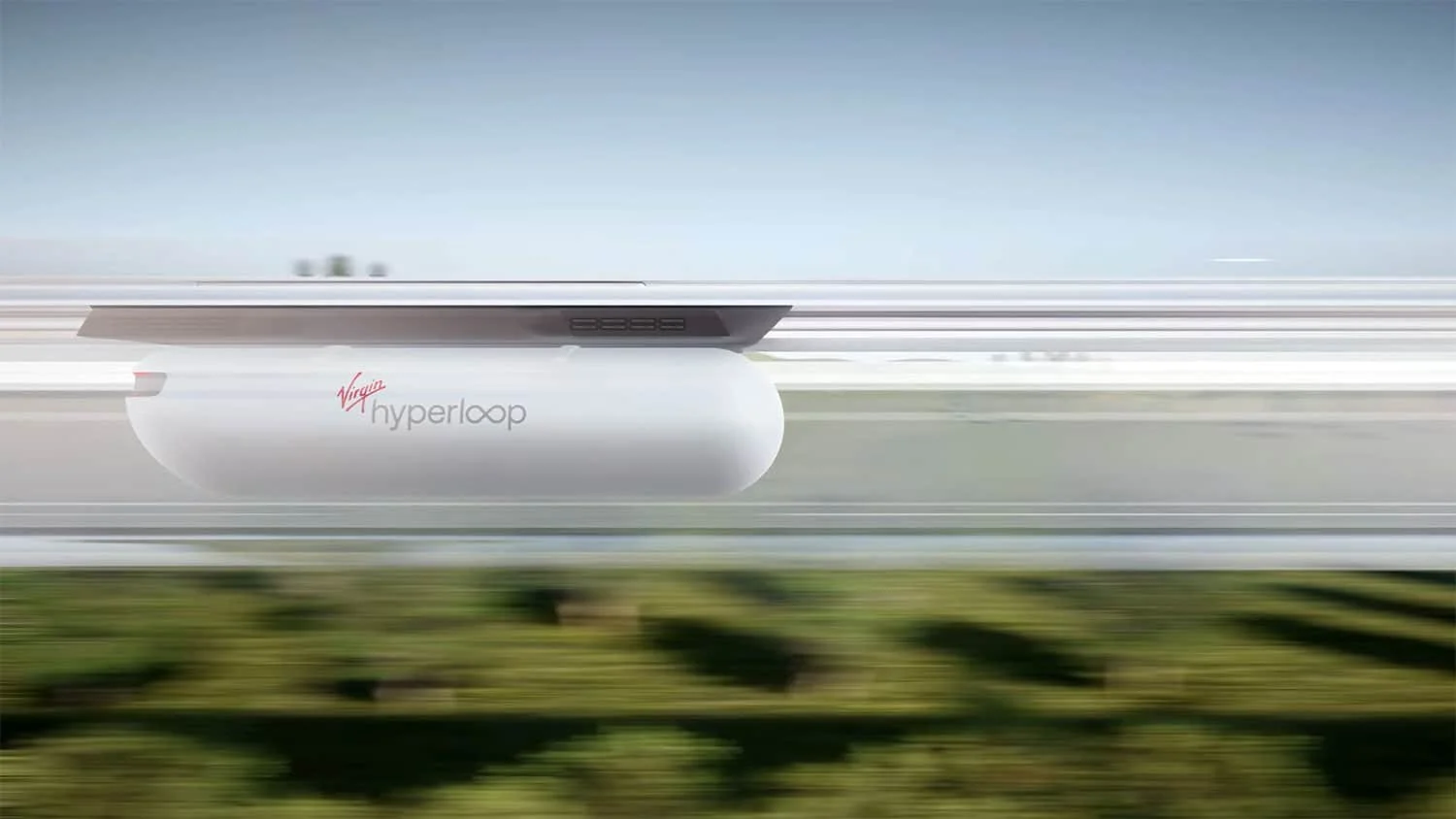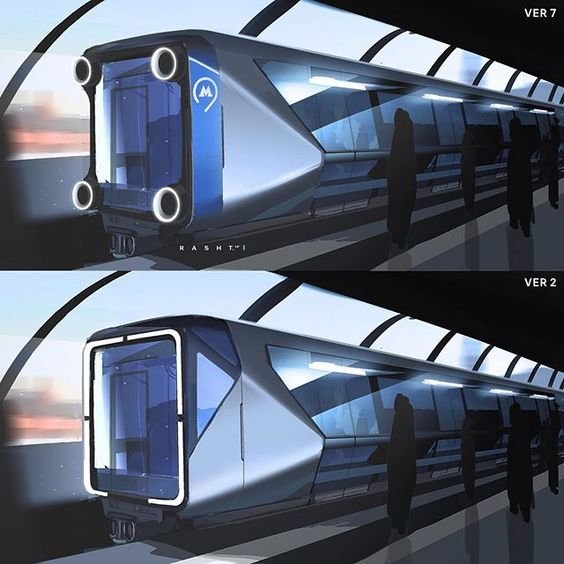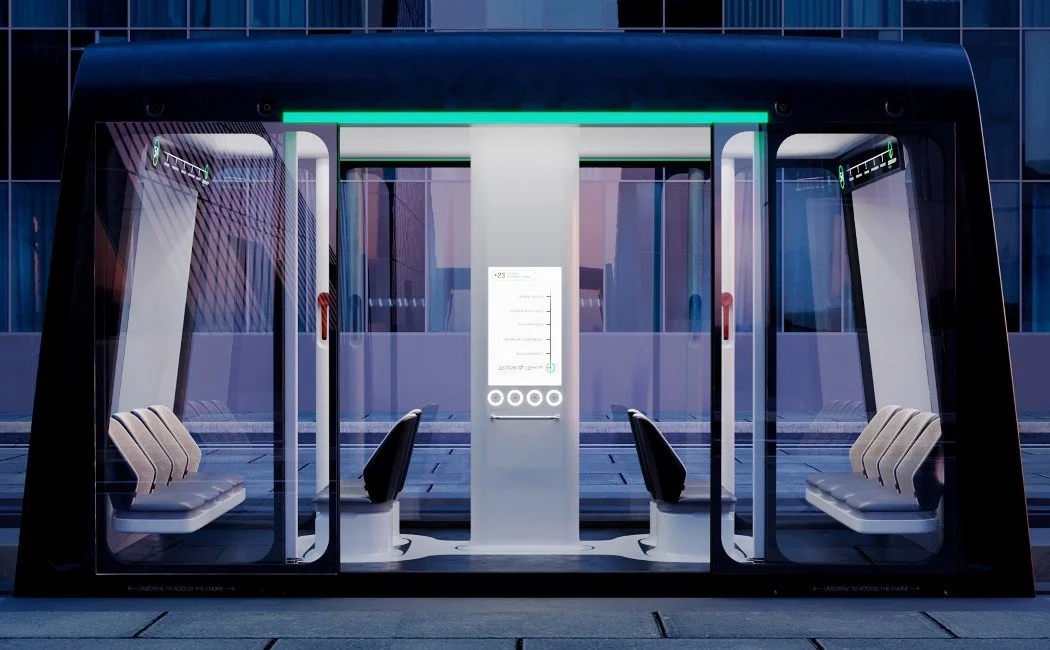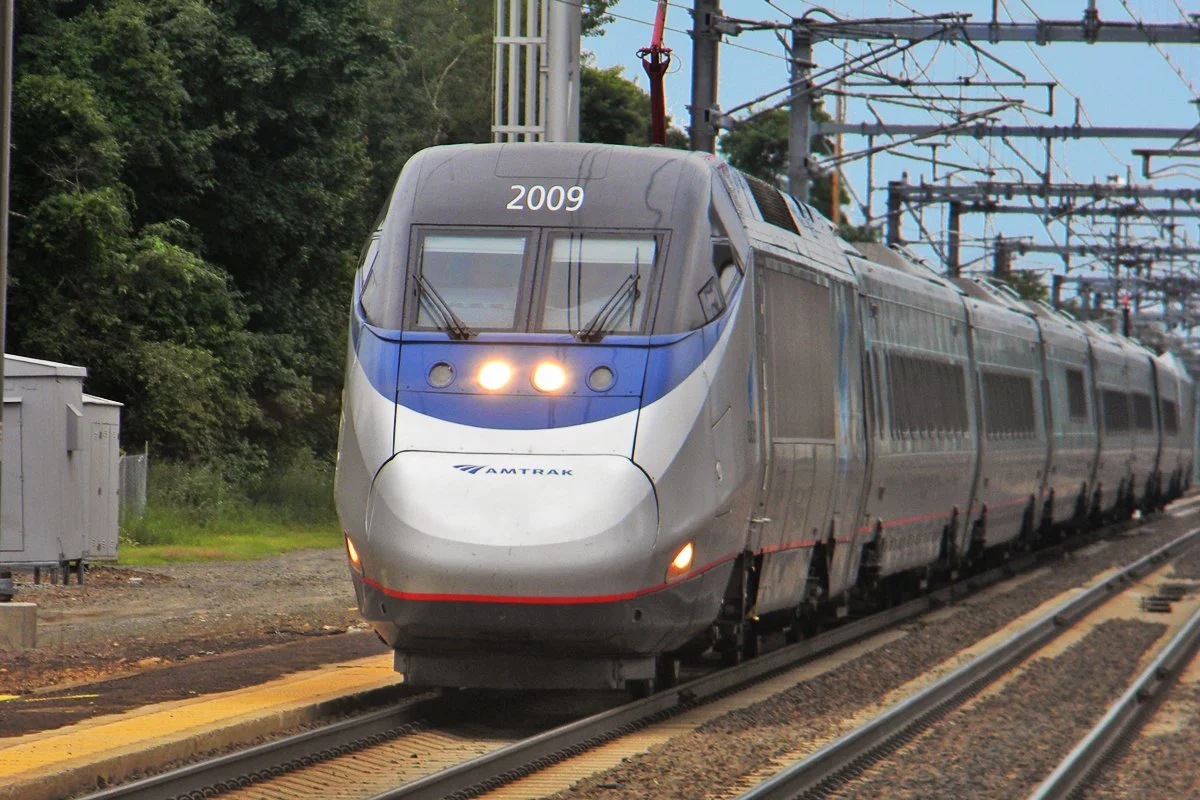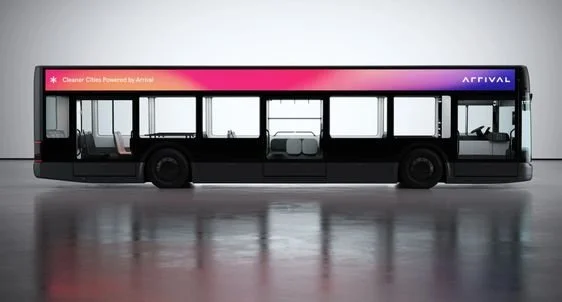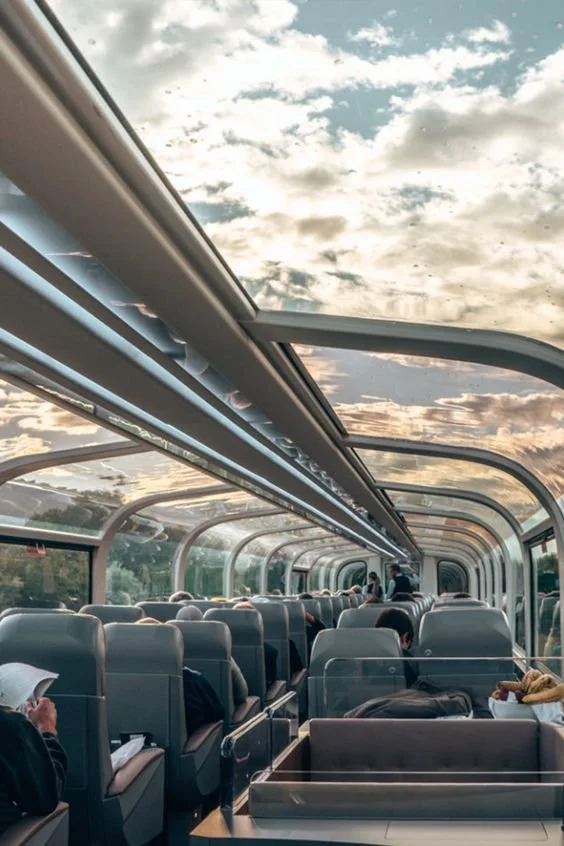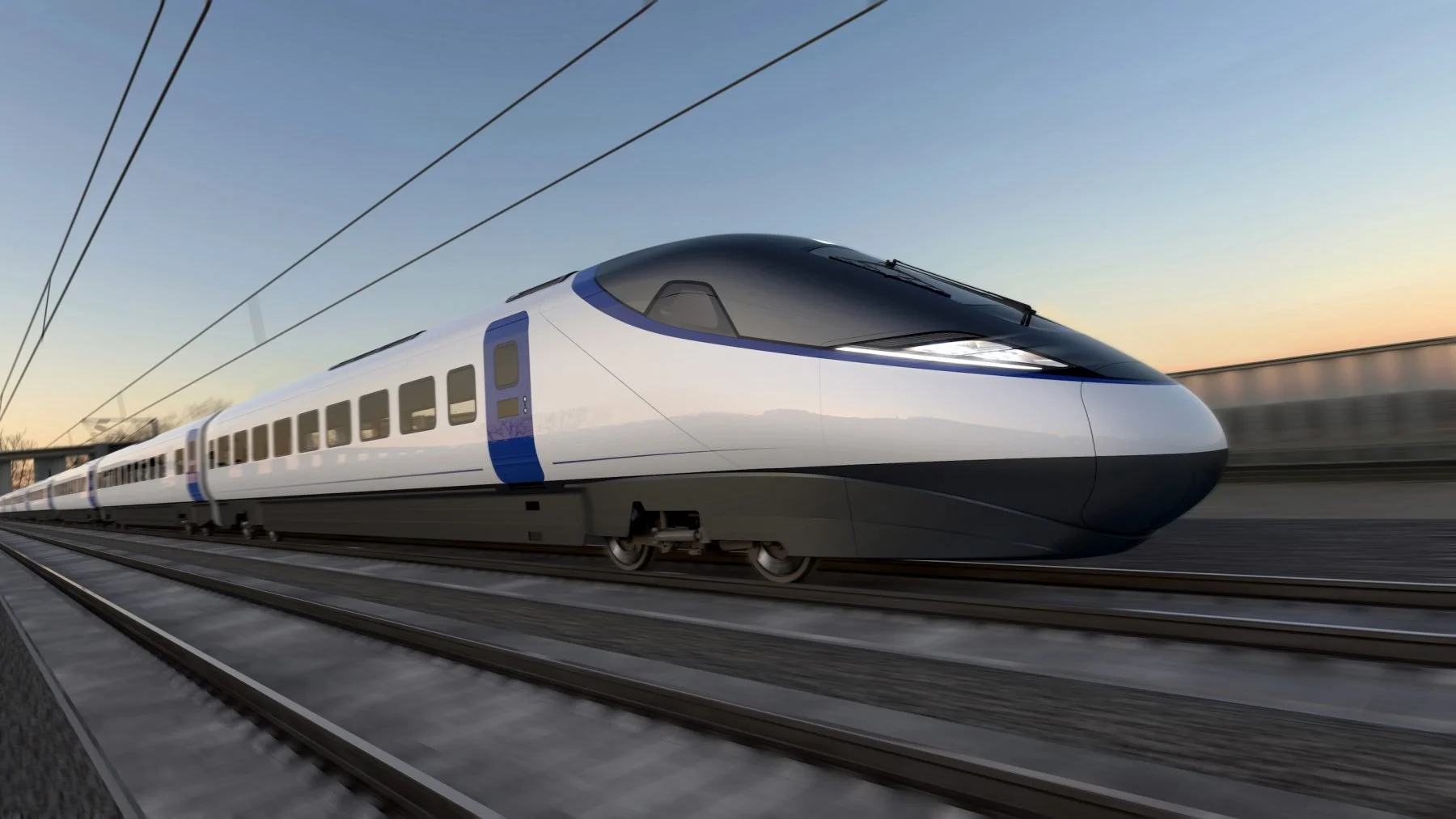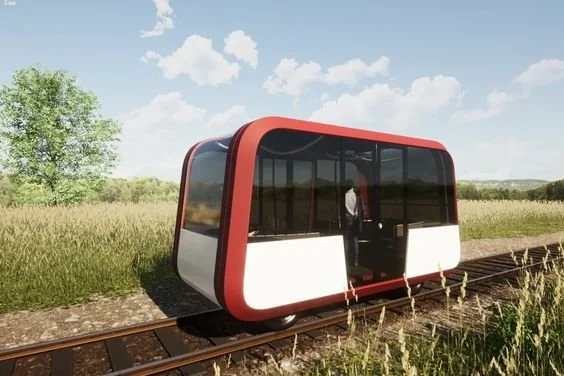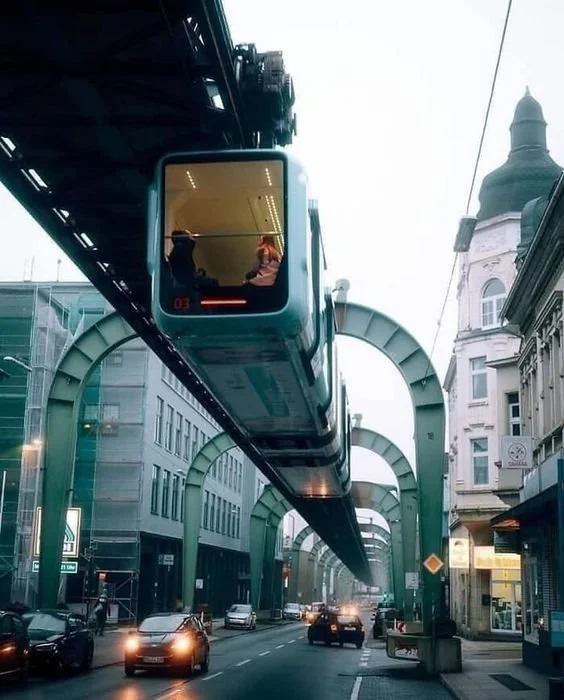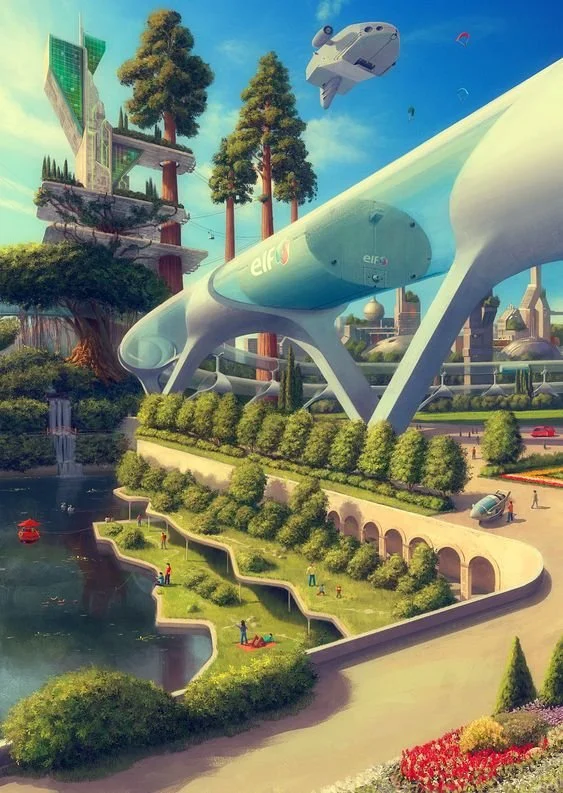Return of the Track.
*Train Track, that is.
Introduction-
While doing my US History coursework a while back, I landed on the topic of trains. Now, I was no stranger to the rise of the railroad industry in America during the late 1800’s, but reading about the country's so called “outstanding” history with this form of public transportation made me wonder...What happened? Currently, public transportation in America is highly disappointing to say the least, as it consistently lags behind that of other countries. Public transportation here, is generally understood as a somewhat non-accessible and often unenjoyable experience, reserved for those unfortunate enough to not have access to a car. That's excluding the semi-rare occasion of taking a flight to travel long distances, and even then, flying coach (which is the reality for the majority of us) can be similarly unpleasant. Our society is heavily car dependent, and it is by no accident that that is the case. We are pushed to buy cars, and even in conversations of future sustainability, there seems to be more focus on making cars more sustainable, then there is on pouring effort and funds into public transportation infrastructure and lowering the use of cars altogether. Additionally, transportation is a large issue due to the fact that it produces around 20% of global pollution. So there is a huge need for zero, or at least low, emission transport. While there are many benefits, there is one primary thing about public transit that makes it such a great transportation alternative to cars: it carries a lot of people. Simple, isn't it? Unfortunately, some of the simplest solutions are often met with the most push back. While having your own personal car is nice, trains and buses can carry hundreds, or even thousands, of people. This means that even before you add on sustainable methods of energy, public transportation already reduces the carbon footprint (compared to all those people driving their own cars) and makes travel more efficient. Plus, if we can make updated, more sustainable and enjoyable iterations, while keeping those traits? Even better. There's a lot to talk about, and I have plenty to say, so I'll be breaking this topic into a 2 article series. In this article, we’ll learn some more about trains and other forms of public transportation that we should be pushing for to move our world towards a greener future.
Amtrak Acela train, Connecticut 2011
Let’s Have a Train Talk-
In the mid 1800’s, America had a boom of railways and train usage all together. Not only were trains innovative and popular for passenger travel, but they carried goods over long distances. This allowed the American economy to grow, massively. The late 1800’s ushered in the “golden age” of rail, and for almost a century, trains were the cardinal mode of transportation. It wasn't until the invention, and later popularization, of cars and airplanes in the 1920’s that trains were pushed from their pedestal of transportation dominance. However, that alone did not bring trains to the near halt that they appear to be at now, so what caused this? Take a guess. Actually, I'll give you a hint: it is what has caused many issues around the world, and still does to this day. Did you guess? I know there are a million possible answers for that question, but the correct answer in this situation is: capitalism and greed. And, because I couldn't have said it better myself, I’ll quote a YouTube comment: “So basically, again in the history of America, a faster and much more efficient process was abandoned for a slower and less efficient process because the money of large companies was more important”. *Sigh* Yeah. That comment is from CNBC's video on why the US doesn’t have high speed rail. The video does a comprehensive breakdown of this downright conspiratorial history and is a good watch. I have linked it below. Unfortunately, General Motors, Firestone and some other companies decided to assemble, like the capitalistic-anti-public-transportation-Avengers, into a group called National City Lines (NCL) with the goal to monopolize transit. For most streetcars and many trains this worked; they were bought up and converted to bus lines. And while “bus lines” may sound like public transit, this was just another piece of the puzzle to force society into an existence dependent upon auto for transportation. To make matters worse (for us, at least), NCL spreaded A LOT of pro-car propaganda, selling this idea that personal car ownership was intrinsically attached to freedom and the “American Dream”. This was a great way to manipulate the public of the early 1900’s, since the “American Dream” was this amazing new concept that was being developed and popularized. As time progressed, these companies worked alongside the American government to pass car focused legislation and fund the Interstate Highway System. Aside from all of that, the public was already turning against trains, due to the abhorrent policies and behavior of the railway giants who controlled them. Behavior that, of course, had a strong negative effect on poor people and people of color, especially Native Americans. All in all, at one point in time, America did understand the efficiency and capability of trains for passenger travel. Alas, between bad policies, company monopolies and the auto industry, the American rail system fell off heavily. To this day, America has the longest railway network in the world! But nowadays, even with metros and buses, we don't see the same emphasis on public transportation that there used to be. And in public view, especially in places with low access or activity, when people think of trains they have a deterring picture of crowded metros, abandoned railroads and the steampunk aesthetic trains from back in the day. Doesn't look very eco-friendly or comfortable, does it? Even newer trains, metros and buses often do not fit the modern, pleasant, and futuristic bill that we see in today's popular transportation. While aesthetics aren’t the main focus, they will be a contributing factor of how society interacts with these forms of transportation and how eager the people are to do so. But, given what we now know about America's comprehensive railway network, wouldn’t it be possible to revamp the old train design into something more modern and sustainable? Could we then put new trains on rehabilitated old tracks and revive a culture of public transportation? It's definitely possible. However, we need to avoid the current state of metros, buses, and other forms of public transportation, which have been purposefully underfunded and sabotaged (we’re looking at you NCL and US Government) so as to harm minorities (people of color/non-rich people) and force everyone into car dependency. We need to work together to make public transit more appealing, sustainable and, most importantly for the funding issue, popular. If the majority of people use/want to use public transportation, and vote in a way that reflects this, it will (hopefully) be easier to motivate our government to invest more time, money, and effort into transportation infrastructure.
The Hyperloop-
Now, there are some more ambitious plans in play here. I believe it is paramount to start somewhere, even if that means somewhere small. So, we should focus on reforming our public transportation. Improving ride quality, affordability, and efficiency on metros and buses, and repopularising trains. All while making new models that are run on sustainable/renewable energy sources, like electricity, hydrogen or biofuel. Sources that are much less polluting than what we use now. You know, actual fossil fuels? It seems like a lot, but compared to what we're about to talk about…..that is starting small. Ever heard of the Hyperloop? [And yes, I know. It sounds like a new Six Flags ride, and it looks like it came from the future.] The Hyperloop is a high-speed transportation system for both public and goods transport. It uses both maglev (or magnetic levitation) technology and low pressure vacuum tubes to propel pods (basically small train cars) forward at prospective max speeds of 600-760mph. Just for scale, the fastest train in the world right now is a Japanese maglev train which has a max speed of 374mph. For some more scale, the fastest train in America has a max speed of 150mph (and averages around 66mph)... 760mph? That's definitely fast. The idea was invented by, not Elon Musk (no matter how many times people try to say it was), who coined the term in 2012/13, but Robert H. Goddard in 1904. His idea was called the Vactrain, named after the vacuum chamber the train would be in, and the Hyperloop uses the same technological planning of a maglev train inside a vacuum. While this idea seems far from ever becoming a reality, it is closer than you would think, with the first human passenger test run occurring in November of 2020. This was achieved by Virgin Hyperloop. When he coined the term and showcased his design, Elon Musk made the hyperloop an “open-sourced” project and encouraged others to try and make it a reality. Because of this, there are many companies all over the world trying to make a working model, it seems Virgin Hyperloop has come the furthest. During the test, the pod reached a top speed of “107.5 MPH on just 500 meters of track”. And the company has even put out a video of what your experience would be like as a passenger, from arriving at the “Portal” (their chosen name for the Hyperloop station) and getting on the pod, to arriving at your destination. You have to understand that even after the successful passenger test, there’s been many videos and articles put out to explain why, from a science/engineering perspective, this Hyperloop would never work for large scale passenger travel. And personally, I think that before we could even touch on those issues, we have to address the fact that public transportation in this country needs a lot of work already. We need to first fix the public transportation that we have, and change the way we think about public transportation as a society, before trying to make something like this Hyperloop function….But it is an undeniably amazing concept, and since we're having this conversation I thought we could touch on it. Moving forward.
Metros, Buses and Trams-
So, trains need to come back in high capacity. Got it. However, I would be remiss to ignore the presence of metros/subways, buses, and trams which are currently the occupants of the train-sized space in public transportation. I do believe in quality over quantity. But, I think that a few forms of transportation working together will result in a better and stronger system, compared to axing multiple forms of transportation for one. Trains are amazing, but when it comes to inner-city/shorter distance travel? The aforementioned few are certainly more practical. Let's start off with metros. I never quite understood the purpose of metros. To me, the only real difference between metros and trains was that metros are mainly underground. After some research, I’ve come to find that metro trains (the full term) are…trains! *Jazz hands* Technically, I was right. They are underground trains that were specifically designed to service metropolitan cities, hence the name. As for their being underground, there wasn’t sufficient room for the construction of above ground train systems in these established urban/city areas. Additionally, the underground placement made room for the building and usage for roadways in a way that regular trains never would. Thus allowing metros to be another option, but not a full on replacement to cars. Metro trains started in London in 1863 with the Metropolitan Railway and made their way across the pond in 1897. The first US metro was built in Boston, but unlike the European metros, it was above ground. This was soon followed by the underground metro trains in Chicago and New York City. In the specific situation of mass metropolitan area travel, metros/subways are the peak selection. And on the sustainable end, the majority of them are already fully electric! My main critique of metros, which I think is a pretty general viewpoint, is that they suck to ride. Now, whose idea was it to have all the seats facing each other? This isn't even one of the bigger complaints, from what I’ve heard, but I personally think that it's not a great idea to force a bunch of strangers to stare directly into each other's souls for the entire ride. Most often, the things people (reasonably) find issue with are directly linked to underfunding: “They’re inconsistent with arrival and departure times”, “They are so dirty”, “The metros take too long”, “[the subway] is way overcrowded and too uncomfortable”, “its not accessible for me”, “They’re not safe”. With it being just over a week after the horrible subway attack in Brooklyn, that last one really strikes a chord. Now we could get into a full-blown conversation about the police, but this article is about public transportation so we're going to stick to that…for now.
If you go through those complaints you'll realize that with enough money and some critical thinking, the majority of them are easily solved. To combat inconsistent times, figure out why the times are inconsistent. For example, if a majority of the cars are sitting around not running, you could try, I dunno, running them? Now I'm sure there's some deeper complexities to that specific problem that I couldn't speak to, but they are not so complex that with the knowledge and technological advancements we have today this should still be such a big issue with so many systems. Due to the pandemic, in recent years there's been an uptick in public hygiene and that should spread to the subways and metros. Politicians can spend a little bit more money on keeping the stations and the trains clean and we as riders could use a little bit more effort to not contribute dirtiness to our surroundings. While I might have been a Girl Scout all my life, you don't have to be one to follow the policy of leaving places better than you found them. Travel time ties in to the inconsistency, so with a more efficient and timely system the travel time would go down. However, because public transportation services multiple people instead of just one, there's bound to be some time cutbacks once you include the multiple stops a subway or metro has to take on its way to your destination. This issue is two-pronged, as it would take improvement on the speed and efficiency of the Metro, but also a little less individualism on our part as riders. Being able to say the metro is moving as efficiently as possible to get us somewhere and being able to understand that we all have equally important “somewheres” to go would likely reduce the level of complaint on this issue. To solve both overcrowding and accessibility, better design is essential. Cheddar made an interesting video about the history of New York subway design and how it affects riders, which will also be in the links below. Metro cars with plenty of accessible spots for wheelchair users and efficiently organized seating would provide passengers with comfortable options, whilst still utilizing the space given. Lastly, when it comes to safety, metros and subways are notorious for issues varying from robbery and sexual assault to people falling onto the tracks and attacks like the one in Brooklyn. This, I believe is a larger problem of overall Public Safety, and would require better security measures throughout society in general. An idea to prevent one of the aforementioned safety problems would be for all metro/train stations to use something, such as a gate, to block off the edge of the platform. The colored line is deterring enough for most, but a physical barrier would provide a concrete presence that would prevent many accidents from occurring. Problem solving is a necessary skill in all situations, but for this specifically, in just one long-ish paragraph I could find some solutions to the aforementioned problems. As I said, there levels to this issue and I’m sure its not as simple as I might be making it out be. However, there is a huge lack of collaboration and communication between the government and the people. If we voice an issue and the government “begins to solve it”, but doesn’t tell us that they’re doing so or we have no proof over plenty of time, are we to believe they are actually trying to solve the issue? Despite these problems, and the fact that they could definitely use a visual update for the aesthetic purposes that I mentioned, metros are more common in use and much further along in sustainability when compared to classic trains.
Concept Metro, @rash_tagirov (via Instagram)
While that section was focused on metros/subways, the problems I mentioned are issues that people have with public transportation in general. On a positive note, this means that many of the same solutions could be applied to each form of public transportation. Next, buses and trams. Again, it seems as though buses and trams are the same thing. Except for one, even smaller difference, which is that trams run on a tramway track. (Unless, they don't.) Unlike regular rail/train tracks which are elevated, tramway tracks are integrated into the street. However, as I mentioned, some trams don't run on tracks at all. Basically, trams are similar to monorails, and almost the same as streetcars, which are pretty much buses that look and work like trains. Let's just say there is quite a bit of overlap. Regardless, when it comes to inner-city travel, a tram or bus is your best bet. Once we've solved the universal public transportation issues that I spoke on above, there's so much possibility for what can become of buses and trams in the future. Choosing the current most popular option as far as sustainable energy, many bus companies are looking to go electric. Some designers and engineers have begun to work on very comfortable looking buses with autonomous systems. Additionally, being tenacious and combining a few innovative ideas at once, the designers at Russia-based Working People developed a concept for autonomous monorail pods…which are just as cool as they sound. Explained in an article on Yanko design, the author says “The Urban Monorail Shuttle pods are a unique combination of self-driving cars and trams. They operate on existing roadways, relying on a single…network spread across the city. The cars…comfortably seat 10 people” (despite the image showing 12 seats…¯\_(o_o)_/¯) “, making them ideal for more complex routes instead of a tram’s fixed-route system. They drive autonomously too, relying on a pre-built pathway to move in either direction, and a variety of sensors and algorithms to know when to stop, turn, and avoid obstacles”. The author even mentions how the design team said “the monorails can be laid down anywhere on a multi-lane road or highway, running along the side or even down its center, creating a wider, more useful median strip”, which sounds like a pretty amazing idea to easily integrate these into the current roadway structure. While this behavior already fits the bill, you'll see for yourself below that these also look quite futuristic and I personally wouldn't mind hopping in a shuttle pod to get to my necessary destinations.
Conclusion-
As excited as I am about the public transportation that we’ve gone over, after ranting to my family group chat on the subject, my mother asked “so you don't want a car anymore? Are you planning to ride the train now?”, and that made me take a pause. I recently obtained my driver's permit and I’m super excited! I've wanted the independence of being able to drive myself in my own car since I was very young, and I know many young adults feel similarly. I kinda still do want a car, but for the sake of our planet and society, better public transportation is a necessity. With most people utilizing public transportation, we could reduce roadways, giving back to the earth in the form of green spaces and find better uses for all of those giant parking areas that spend so much time empty (or serving the not so important purpose of holding cars that are...empty). I hope this article gave you some food for thought about how public transportation affects our lives and the world around us. Additionally, I truly hope it gave you some amazing ideas for what the world could be and how big a part the future of transportation will play in that.
Jewel Changi Airport, Singapore.
Would you believe me if I told you that I thought breaking this article into a 2 part series would somehow make me less long-winded? I don't know guys, I'll keep working on it. Thank you for allowing my thoughts to occupy this portion of your time and hopefully some portion of your mind as you mull over all that I wrote! If you find yourself interested in this topic…that's great! I am too (obviously). I put plenty of links below if you'd like to do your own research or just learn a little more.
Ps. Happy Earth Day ✨🌎✨ - Camylle and The Z Team 🌎
The real reason American public transportation is such a disaster - Vox
The government screwed up the American rail system. Now it can make amends. - The Washington Post
Why Public Transportation Works Better Outside the US - Bloomberg
Transportation and Climate Change | National Geographic Society
Breaking the Myth About America's 'Great' Railroad Expansion
The real story behind the demise of America's once-mighty streetcars - Vox
To Move Is To Thrive: Public Transit and Economic Opportunity for People of Color | Demos
How The Auto Industry Carjacked The American Dream | Climate Town
Why did cars become the dominant form of transportation in the United States?
Getting the Youth of Today Involved in Public Transportation for Tomorrow | TheCityFix

